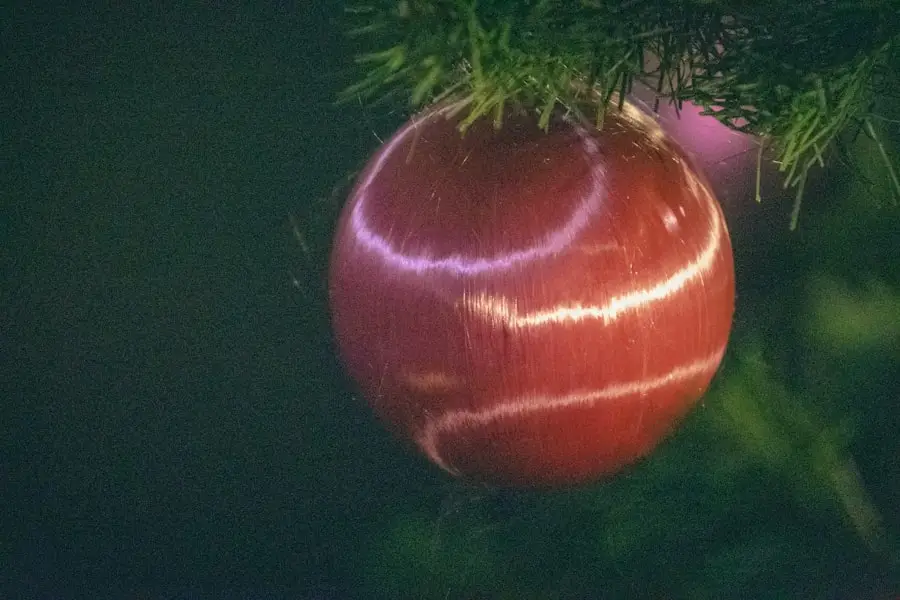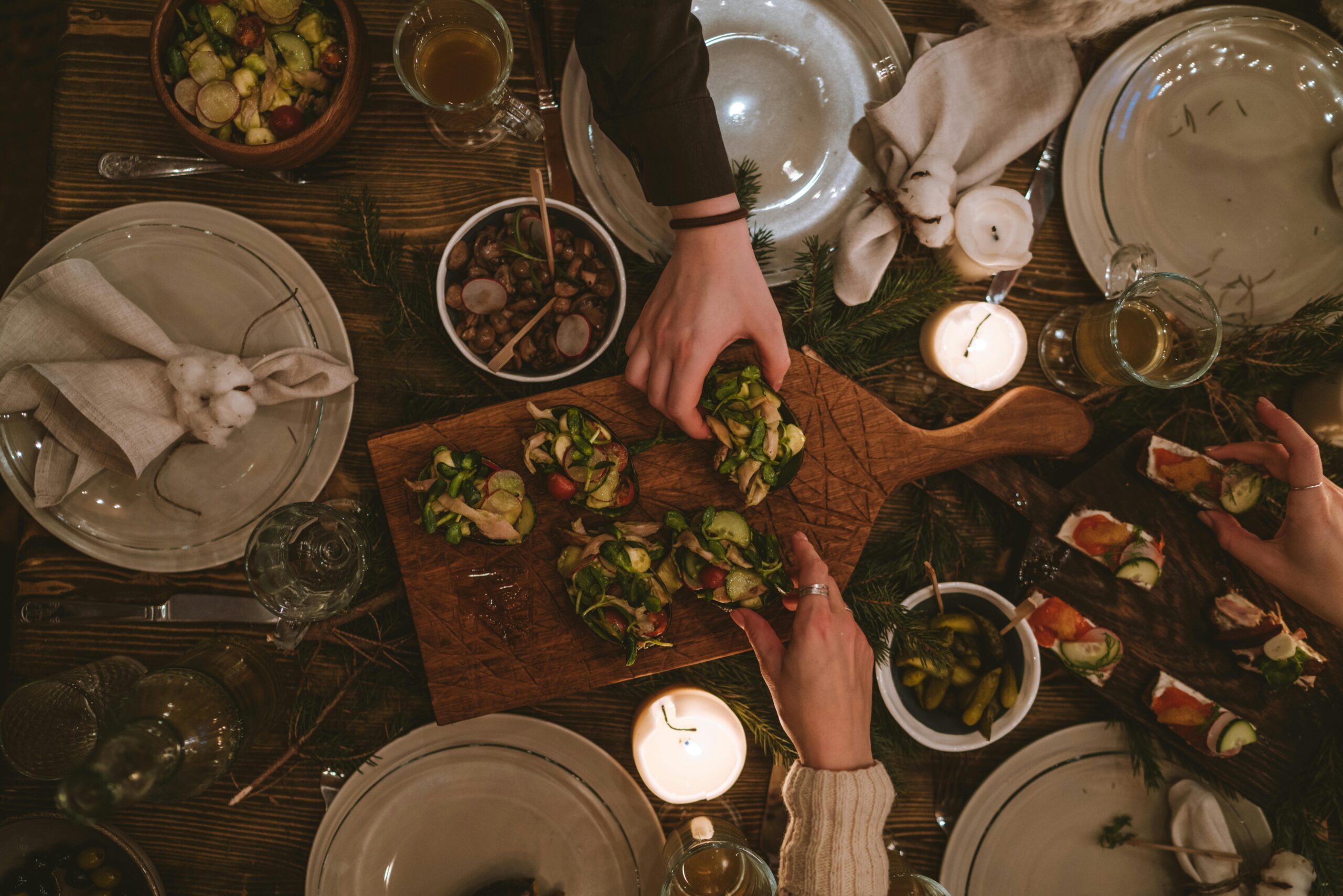The tradition of serving ham during the festive season has deep roots that stretch back centuries. In many cultures, the pig has been a symbol of prosperity and good fortune, making it a fitting choice for celebratory feasts. In the UK, the custom of enjoying ham at Christmas can be traced back to the Middle Ages, when families would often slaughter a pig in preparation for the winter months.
This practice ensured that they had enough food to last through the cold season, and what better way to celebrate the end of a year than with a hearty feast featuring this succulent meat? As time progressed, the tradition evolved, and ham became a staple on the Christmas table. The practice of glazing and roasting ham gained popularity, particularly in Victorian England, where elaborate meals were a hallmark of the festive season.
The introduction of sugar and spices into the glazing process added a new dimension to the dish, transforming it into a sweet and savoury delight that would tantalise the taste buds. Today, Christmas ham is not just a meal; it is a symbol of togetherness, family, and the joy of sharing a meal with loved ones.
Summary
- Christmas ham has a rich history rooted in festive traditions.
- Selecting the right ham involves considering size, curing method, and flavour.
- Classic recipes often feature glazed hams with cloves and honey.
- Contemporary twists include unique marinades and international flavours.
- Perfect sides and presentation enhance the festive ham experience.
Choosing the Perfect Christmas Ham
Selecting the ideal Christmas ham can be a delightful yet daunting task, given the variety available in shops and markets. When choosing your ham, consider whether you prefer a bone-in or boneless option. Bone-in hams tend to be juicier and more flavourful, as the bone helps to retain moisture during cooking.
On the other hand, boneless hams are easier to carve and serve, making them a practical choice for larger gatherings. Another important factor to consider is the type of ham. There are several varieties, including dry-cured, wet-cured, and smoked hams.
Dry-cured hams are typically saltier and have a firmer texture, while wet-cured hams are often sweeter and more succulent due to the brining process. Smoked hams offer a distinct flavour profile that can add depth to your festive meal. Whichever type you choose, ensure that it is of high quality; look for hams that are labelled as free-range or organic for the best taste and ethical considerations.
Traditional Christmas Ham Recipes

When it comes to traditional Christmas ham recipes, one cannot overlook the classic glazed ham. This dish typically involves scoring the surface of the ham in a diamond pattern before applying a glaze made from brown sugar, honey, and mustard. The glaze caramelises beautifully during cooking, creating a sticky, sweet crust that contrasts wonderfully with the savoury meat beneath.
To elevate this dish further, consider adding cloves or orange zest to the glaze for an aromatic twist. Another beloved recipe is the honey-baked ham, which is often prepared with a simple yet effective combination of honey, Dijon mustard, and apple cider vinegar. This recipe allows the natural sweetness of the ham to shine through while adding a tangy kick that balances the flavours perfectly.
Serve it alongside roasted vegetables or creamy mashed potatoes for a truly festive feast that will leave your guests raving about your culinary skills.
Modern Twists on Christmas Ham
In recent years, many home cooks have begun to experiment with modern twists on traditional Christmas ham recipes. One popular variation is the use of exotic spices and flavours to create unique glazes. For instance, a maple syrup and sriracha glaze can add an unexpected heat that complements the sweetness of the ham beautifully.
This fusion of flavours not only excites the palate but also adds an element of surprise to your festive table. Another innovative approach is to incorporate seasonal fruits into your ham preparation. Think about using pomegranate molasses or cranberry sauce as part of your glaze or as a side accompaniment.
These fruity elements not only enhance the visual appeal of your dish but also provide a refreshing contrast to the richness of the ham. By embracing these modern twists, you can create a memorable Christmas meal that pays homage to tradition while also celebrating contemporary culinary trends.
Pairing Christmas Ham with the Perfect Sides
The right side dishes can elevate your Christmas ham from a delicious main course to an unforgettable feast. Classic accompaniments such as roasted potatoes and Brussels sprouts are always crowd-pleasers. The crispy edges of roasted potatoes pair beautifully with the tender meat of the ham, while Brussels sprouts add a touch of bitterness that balances out the sweetness of any glaze you may have used.
For those looking to add a bit more flair to their festive spread, consider serving your ham with a vibrant winter salad featuring seasonal greens, pomegranate seeds, and toasted nuts. The crunchiness of the nuts and the burst of sweetness from the pomegranate will provide a delightful contrast to the rich flavours of the ham. Additionally, creamy sides like colcannon or cheesy cauliflower bake can add comfort and warmth to your meal, ensuring that every guest leaves satisfied.
Tips for Cooking the Perfect Christmas Ham

Cooking a Christmas ham may seem intimidating at first, but with a few simple tips, you can achieve perfection every time. First and foremost, always allow your ham to come to room temperature before cooking; this ensures even cooking throughout. Preheat your oven adequately and use a meat thermometer to monitor internal temperatures—aim for around 70°C (160°F) for optimal juiciness.
Basting your ham periodically during cooking is another essential step that helps keep it moist and enhances flavour. If you’re using a glaze, apply it during the last hour of cooking to prevent burning while still allowing it to caramelise beautifully. Finally, let your ham rest for at least 20 minutes after removing it from the oven; this allows juices to redistribute throughout the meat, resulting in a tender and succulent dish.
Serving and Presentation Ideas for Christmas Ham
Presentation plays a crucial role in making your Christmas ham the centrepiece of your festive table. Start by placing your beautifully glazed ham on an attractive serving platter; consider garnishing it with fresh herbs like rosemary or thyme for an aromatic touch. You might also want to add slices of seasonal fruits such as oranges or apples around the base for colour and vibrancy.
For an added touch of elegance, consider serving your ham with small bowls of complementary sauces or chutneys on the side. A tangy mustard or sweet apple chutney can enhance each bite while allowing guests to customise their experience. Finally, don’t forget about carving; using a sharp knife to create even slices will not only make serving easier but will also showcase the beautiful marbling of your ham.
Leftover Christmas Ham Recipes
Once you’ve enjoyed your Christmas ham feast, you may find yourself with plenty of leftovers—an opportunity not to be wasted! One delightful way to use up leftover ham is by making a hearty soup or stew. Simply chop up your remaining meat and add it to a pot with vegetables like carrots, celery, and potatoes along with some stock for a comforting meal that warms both body and soul.
Another fantastic option is to create a classic ham sandwich or quiche. Layer slices of ham with cheese and fresh greens between crusty bread for an indulgent lunch or incorporate it into an egg-based quiche for an easy brunch dish that’s sure to impress guests. With these creative ideas in mind, you can ensure that no part of your festive feast goes to waste while enjoying delicious meals long after Christmas Day has passed.
In conclusion, Christmas ham is more than just a dish; it embodies tradition, celebration, and togetherness during one of the most cherished times of the year. By understanding its history, choosing quality ingredients, experimenting with modern recipes, and pairing it with delightful sides, you can create an unforgettable festive experience for yourself and your loved ones. So roll up your sleeves and get ready to make this Christmas one filled with flavourful memories!
FAQs
What is a traditional Christmas ham in the UK?
A traditional Christmas ham in the UK is typically a cured and sometimes smoked pork leg, often glazed with honey, mustard, or brown sugar. It is a popular festive dish served as part of the Christmas dinner.
How is Christmas ham usually cooked?
Christmas ham is usually baked in the oven. It is often scored in a diamond pattern and glazed during cooking to create a caramelised, flavourful crust. Cooking times vary depending on the size of the ham.
Can I buy a ready-cooked Christmas ham?
Yes, many supermarkets and butchers in the UK sell ready-cooked or partially cooked Christmas hams, which only require reheating before serving.
What are common glazes used for Christmas ham?
Common glazes include honey and mustard, brown sugar and cloves, maple syrup, or a mixture of marmalade and mustard. These add sweetness and a rich flavour to the ham.
How long does Christmas ham keep after cooking?
Cooked Christmas ham can be stored in the fridge for up to 3-5 days. It should be wrapped well to prevent drying out. Leftover ham can also be frozen for longer storage.
What side dishes go well with Christmas ham?
Traditional side dishes include roast potatoes, Brussels sprouts, parsnips, carrots, stuffing, and cranberry sauce. Many also serve ham with bread sauce or mustard.
Is Christmas ham gluten-free?
Most plain Christmas hams are naturally gluten-free, but it is important to check the ingredients of any glaze or pre-prepared ham for hidden gluten-containing additives.
Can I prepare Christmas ham in advance?
Yes, Christmas ham can be cooked a day or two in advance and reheated before serving. This can help reduce stress on the day of the meal.
What is the difference between Christmas ham and gammon?
Gammon is the hind leg of pork that has been cured but not cooked. Christmas ham is usually gammon that has been cooked and glazed, ready to serve.
Where can I buy Christmas ham in the UK?
Christmas ham can be purchased from supermarkets, local butchers, and speciality food shops across the UK, especially during the festive season.



